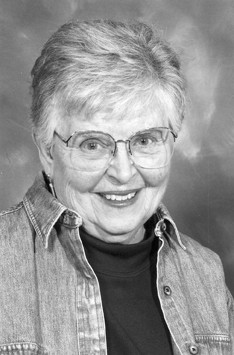Rabbitbrush Rambler: Christmas togetherness

Activities have been building up to Christmas with joy-aplenty. One of the things I am liking especially about many of these events is that they bring people together during a period of time when politics have split so much of our nation and the rest of the world into factions and enmities.
Here in the Valley, the togetherness seems nonstop, though. It began with a bang over in Del Norte with a parade followed by fireworks. Soon after, with lots of tooting of locomotives, families turned out at the depots in both Alamosa and Antonito for Santa. We enjoyed the annual lighting of old No. 169 in the park, too.
On the cultural side, there were performances at Adams State University of Shakespeare’s “Midsummer Night’s Dream,” a reminder that several of the playwright’s works were intended for entertainment. A few days later, the Mountain Valley Dance Studio was presenting its beloved Tchaikovsky’s “Nutcracker Suite.”
Music is a big part of the good cheer during the season in other ways. The annual, rousing performance of Handel’s “Messiah” by the Valley Community Chorus at Sacred Heart Church has always been a highlight of the season, and this year an additional performance took place with the San Luis Valley Symphony Orchestra at Richardson Hall.
But I felt a jolt when I read advance publicity calling the “Messiah” a “show.” C’mon, hadn’t the publicity writer ever heard that Handel’s glorious “Messiah” is an oratorio with scriptural lyrics, not show time? It was first performed in a cathedral in Ireland in 1742 and the next year in England, beginning a long, illustrious life in sacred music. It has held an important role in churches, along with other oratorios, anthems, and hymns composed for them.
Other activities in the Valley during the season that have brought people together have featured popular local musicians, and a tradition that brings people out in their scarves and mittens year after year is Christmas caroling.
Carolers, often but not always, are church groups, singing in churches and strolling through neighborhoods. There also have been school children and clubs caroling in nursing homes, hospitals, and outside the homes of shut-ins. One unique group met at the Monte Vista Cemetery Chapel and caroled along the roadways, remembering those who have gone in the past.
Carols have been a tradition for centuries. Singing was part of pagan celebrations before the first Christmas, and, like angels on high, the tradition of Christmas caroling spread in Northern Europe and became especially popular in Victorian England.
As we drive around our communities and country roads, beautiful nativity scenes in scattered locations remind us of the original reason for the season. One year when I was in San Luis, I took part in Las Posadas, an especially memorable experience when we walked a rural road seeking the Inn and warming ourselves at a bonfire in the middle of a village street. Generally, we don’t see religious activities on public property, but county roads and sidewalks are an exception at Christmas in some places.
Local customs remind me of a brouhaha when steps of the city and county building at the Denver City Center still displayed its nativity scene during the Christmas season. Freedom of religion in a nation with diverse faiths, or no affiliation at all if one so chooses, caused a nativity scene to be taboo on those steps, so it disappeared. And rightly so, in more urbane places.
Millions of people are celebrating the season in whatever way they prefer, often with strings of twinkling lights in honor of Santa, candy canes or bells, the Broncos, whatever. But some of us are looking for a bright star in the night sky that shepherds followed and a baby in a manger. So I am glad to still see some nativity scenes, on private property of course, reminding us of the message about peace and goodwill for all.



